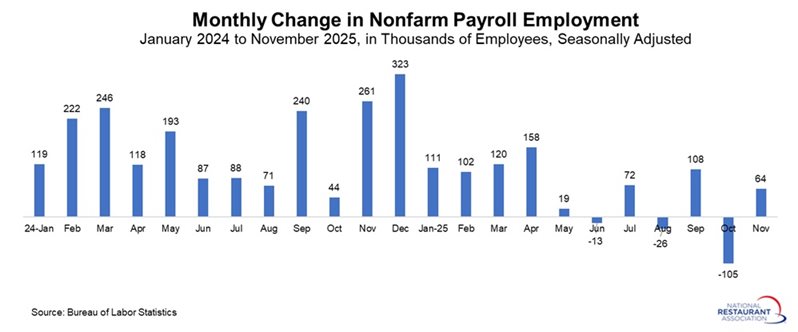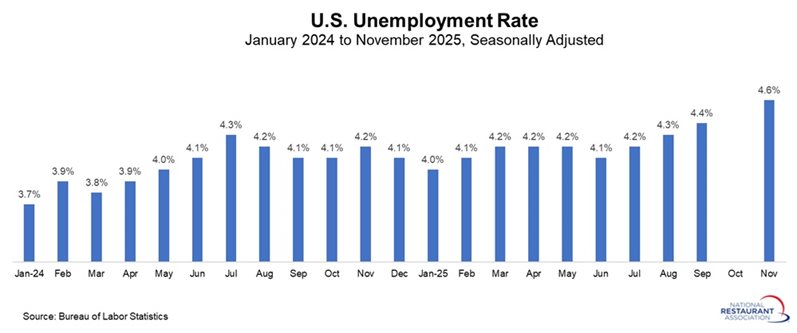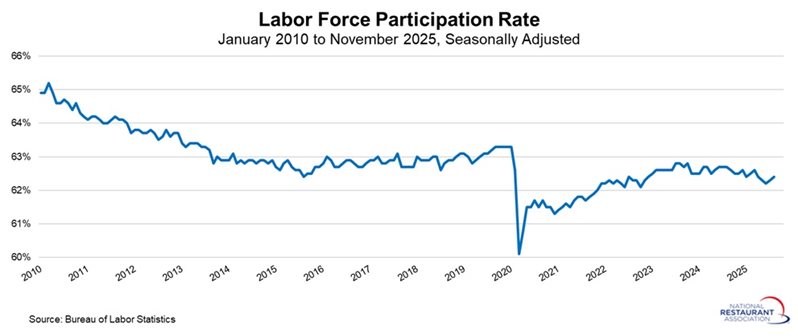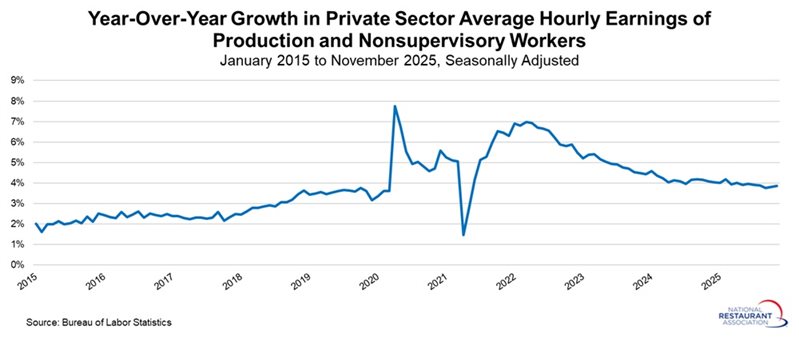Research
December 16, 2025
Total U.S. jobs
The unemployment rate rises in November amid a softening labor market
After a delayed release caused by the government shutdown, we now have clearer insight into labor market conditions for October and November. As anticipated, federal government employment fell sharply, declining by 162,000 jobs in October and another 6,000 in November. Meanwhile, the private sector added 52,000 positions in October and 69,000 in November on net. Overall, the U.S. economy shed 105,000 nonfarm payroll jobs in October before recovering modestly with a gain of 64,000 in November.
Over the past seven months, job growth has seesawed from month to month, with employment declining in three of those months. While the underlying trend remains positive, the pace of hiring has slowed materially since the spring. From May through November, the economy added a net 119,000 jobs, compared with 1,119,000 jobs in the previous seven-month period (September to April)—a notable difference of one million fewer jobs.
There were 159.552 million nonfarm payroll employees in November, just shy of September’s record 159.593 million. As such, even with recent weaknesses, the U.S. economy has demonstrated surprising resilience over the past few years, navigating multiple headwinds and an uncertain policy environment. However, the recent softening in labor market conditions could challenge the prevailing narrative of post‑pandemic strength. Steady employment and wage growth have been key drivers of consumer spending, and any sustained weakness could weigh on economic activity.
Restaurant operators are closely monitoring labor trends as they seek to drive traffic and sales, especially given the recent softness. At the same time, while challenges remain, there are also positive indicators that could support performance in the sector, reflecting mixed economic signals overall. Labor market developments will be critical to watch in the coming months as businesses adapt to evolving economic and policy dynamics.
In November, the unemployment rate rose to 4.6%, the highest since September 2021. There was no data point for October due to the government shutdown. The number of unemployed individuals increased from 7.60 million in September to 7.83 million in November, a level not seen since August 2021. At the same time, the number of employed individuals rose from 163.65 million to 163.74 million, remaining below (but not far from) April’s record high of 163.94 million.
The labor force participation rate edged up from 62.4% in September to 62.5% in November, the highest since April. This suggests that more individuals are returning to the labor market after being on the sidelines in recent months. The higher labor force participation rate helps explain some of the rise in the unemployment rate, with more prospective workers looking for employment.
Average hourly earnings for private-sector production and nonsupervisory workers rose 0.4% in October and 0.3% in November. Wages increased 3.9% year-over-year, a solid pace of growth. Even so, labor cost pressures have moderated significantly from the recent peak of 7.0% in March 2022.
Private sector job growth in November was mixed and weaker than desired. There were gains in private education and health services, construction and professional and business services. In contrast, there were notable job declines in trade, transportation and utilities (except for retail sales), leisure and hospitality (except for eating and drinking places), manufacturing, mining and logging, information, and financial activities. Below is a detailed breakdown of November’s employment changes by sector, ranked from highest to lowest:
Over the past seven months, job growth has seesawed from month to month, with employment declining in three of those months. While the underlying trend remains positive, the pace of hiring has slowed materially since the spring. From May through November, the economy added a net 119,000 jobs, compared with 1,119,000 jobs in the previous seven-month period (September to April)—a notable difference of one million fewer jobs.
There were 159.552 million nonfarm payroll employees in November, just shy of September’s record 159.593 million. As such, even with recent weaknesses, the U.S. economy has demonstrated surprising resilience over the past few years, navigating multiple headwinds and an uncertain policy environment. However, the recent softening in labor market conditions could challenge the prevailing narrative of post‑pandemic strength. Steady employment and wage growth have been key drivers of consumer spending, and any sustained weakness could weigh on economic activity.
Restaurant operators are closely monitoring labor trends as they seek to drive traffic and sales, especially given the recent softness. At the same time, while challenges remain, there are also positive indicators that could support performance in the sector, reflecting mixed economic signals overall. Labor market developments will be critical to watch in the coming months as businesses adapt to evolving economic and policy dynamics.

In November, the unemployment rate rose to 4.6%, the highest since September 2021. There was no data point for October due to the government shutdown. The number of unemployed individuals increased from 7.60 million in September to 7.83 million in November, a level not seen since August 2021. At the same time, the number of employed individuals rose from 163.65 million to 163.74 million, remaining below (but not far from) April’s record high of 163.94 million.

The labor force participation rate edged up from 62.4% in September to 62.5% in November, the highest since April. This suggests that more individuals are returning to the labor market after being on the sidelines in recent months. The higher labor force participation rate helps explain some of the rise in the unemployment rate, with more prospective workers looking for employment.

Average hourly earnings for private-sector production and nonsupervisory workers rose 0.4% in October and 0.3% in November. Wages increased 3.9% year-over-year, a solid pace of growth. Even so, labor cost pressures have moderated significantly from the recent peak of 7.0% in March 2022.

Private sector job growth in November was mixed and weaker than desired. There were gains in private education and health services, construction and professional and business services. In contrast, there were notable job declines in trade, transportation and utilities (except for retail sales), leisure and hospitality (except for eating and drinking places), manufacturing, mining and logging, information, and financial activities. Below is a detailed breakdown of November’s employment changes by sector, ranked from highest to lowest:
- Private education and health services: +65,000
- Construction: +28,000
- Professional and business services: +12,000
- State government: +3,000
- Other services: +3,000
- Financial activities: -2,000
- Local government: -2,000
- Information: -4,000
- Mining and logging: -4,000
- Manufacturing: -5,000
- Federal government: -6,000
- Leisure and hospitality: -12,000 (eating and drinking places: +5,600)
- Trade, transportation, and utilities: -12,000 (retail trade: +6,200)